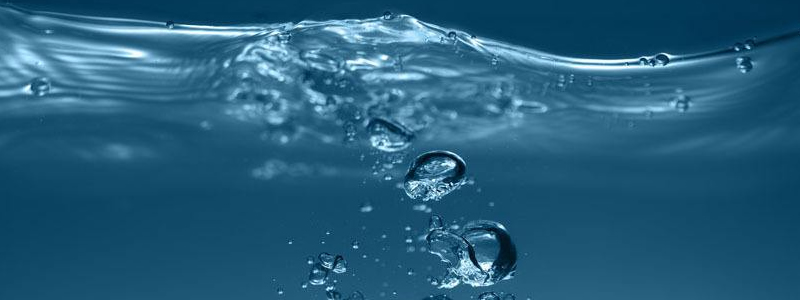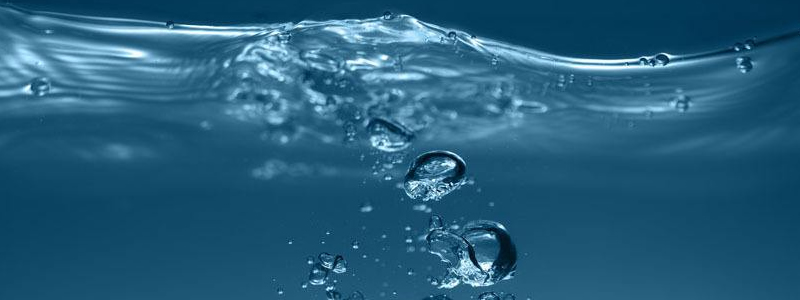
Why can polyaluminum chloride treat sewage?
The coagulation principle of polyaluminum chloride, you will find why it works.
1, compressed electric double layer
The structure of the micelle electric double layer determines the concentration of counter ions on the surface of the colloidal particles. As the distance from the surface of the colloidal particles increases, the concentration of counter ions decreases, and the ion concentration in the solution is equal.
When electrolyte is added to the solution to increase the ion concentration in the solution, the thickness of the diffusion layer is reduced.
When two colloidal particles are close to each other, because the thickness of the diffusion layer decreases and the zeta potential decreases, their mutual repulsive force is reduced, that is, the repulsive force between the colloids with high ion concentration in the solution is smaller than that with low ion concentration.
The suction force between the rubber particles is not affected by the composition of the water phase, but due to the thinning of the diffusion layer, the distance between them when they collide is reduced, so that the mutual suction force is greater.
It can be seen that the combined force of repulsion and attraction has changed from repulsive force to suction force (the repulsive potential energy disappears), and the colloidal particles can quickly condense.
This mechanism can better explain the sedimentation phenomenon in the harbor. When the fresh water enters the seawater, the salt increases, the ion concentration increases, and the stability of the fresh water entrained colloidal particles decreases, so clay and other colloidal particles are easy to deposit in the harbor.
According to this mechanism, when the added electrolyte in the solution exceeds the critical aggregation concentration for agglomeration, there will be no more excess counterions entering the diffusion layer, and it is impossible for the colloidal particles to change signs to stabilize the colloidal particles again.
This mechanism is to explain the effect of electrolyte on the destabilization of colloidal particles by simple electrostatic phenomenon, but it does not consider the effect of other properties in the destabilization process (such as adsorption), so it cannot explain other complex destabilization phenomena.
For example, if the amount of trivalent aluminum salt and iron salt used as coagulant is too much, the coagulation effect will decrease or even stabilize again; another example is the polymer or polymer organic matter with the same charge as the colloidal particles may have a good coagulation effect. The isoelectric state should have a good coagulation effect, but the coagulation is often very good when the ξ electric potential is greater than zero in practices.
In fact, adding a coagulant to the aqueous solution to destabilize the colloidal particles involves the interaction of the colloidal particles and the coagulant, the colloidal particles and the aqueous solution, and the coagulant and the aqueous solution. It is a comprehensive phenomenon.
2, adsorption and neutralization
Adsorption charge neutralization refers to the strong adsorption of the particle surface to the opposite-sign ions, the opposite-numbered colloidal particles or the part of the chain-like off-molecule with the opposite-sign charge, because this adsorption neutralizes part of its charge and reduces static electricity. Repulsive force, so it is easy to get close to other particles and adsorb each other.
At this time, electrostatic gravity is often the main aspect of these effects, but in many cases, other effects exceed electrostatic gravity.
For example, using Na+ and dodecylammonium ion (C12H25NH3+) to remove the turbidity caused by the negatively charged silver iodide solution, it is found that the same monovalent organic amine ion has a much greater destabilization ability than Na+, and Na+ is over-dosed. Addition will not cause the colloidal particles to be stable again, while organic amine ions do not. When exceeding a certain amount, the colloidal particles can be stabilized, which means that the rubber particles have absorbed too much counter ions, and the original negative charge will be transformed into a charged one. positive charge.
When the dosage of aluminum salt and iron salt is high, the stabilization phenomenon and the charge change will also occur. The above phenomenon is very suitable to be explained by the mechanism of adsorption and neutralization.
3, adsorption bridging effect
Adsorption bridging mechanism mainly refers to the adsorption and bridging of polymer substances and colloidal particles. It can also be understood that two large rubber particles of the same size are connected together due to a different size rubber particle.
Polymer flocculants have a linear structure. They have chemical groups that can interact with certain parts of the surface of the colloidal particles. When the high polymer is in contact with the colloidal particles, the groups can react specifically with the surface of the colloidal particles to adsorb each other. The rest of the polymer molecule stretches out in the solution and can be adsorbed to another colloidal particle with vacancies on the surface, so that the polymer acts as a bridging connection.
If there are few rubber particles, the stretched part of the polymer mentioned above cannot adhere to the second rubber particle. Sooner or later, the stretched part will be adsorbed on other parts by the original rubber particles. This polymer will not be able to bridge the role, and the rubber particles. It is in a stable state again.
When the dosage of polymer flocculant is too large, the surface of the colloidal particles will be saturated and stabilized. If the colloidal particles that have been bridged and flocculated are subjected to vigorous and prolonged agitation, the bridged polymer may separate from the surface of another colloidal particle and rewind to the original surface of the colloidal particle, resulting in a stable state.
The adsorption of polymers on the surface of colloidal particles comes from various physical and chemical effects, such as van der Waals attraction, electrostatic attraction, hydrogen bonds, coordination bonds, etc., depending on the characteristics of the chemical structure of the polymer and the surface of the colloidal particles. This mechanism can explain the phenomenon that non-ionic or ionic polymer flocculants with the same charge can obtain good flocculation effects.
4. Sediment net catching mechanism
When metal salts (such as aluminum sulfate or ferric chloride) or metal oxides and hydroxides (such as lime) are used as coagulants, when the dosage is large enough to quickly precipitate metal hydroxides (such as Al(OH)3, In the case of Fe(OH)3, Mg(OH)2 or metal carbonates (such as CaCO3), the colloidal particles in the water can be caught by these precipitates when they are formed.
"When the precipitate is positively charged (Al(OH)3 and Fe(OH)3 are in the neutral and acidic pH range), the precipitation rate can be accelerated due to the presence of anions in the solution, such as silver sulfate ions. In addition, the colloidal particles in the water can serve as the core of these metal oxide precipitates, so the dosage of the coagulant is inversely proportional to the concentration of the removed substance, that is, the more colloidal particles, the less the dosage of the metal coagulant.
The four mechanisms of coagulation introduced above are often not isolated phenomena in water treatment, but may often exist at the same time, but under certain circumstances, they are mainly based on certain phenomena. At present, they can be used to explain water.的coagulation phenomenon.
PAC is a commonly used inorganic salt coagulant. It is a polyaluminum chloride product with a molecular weight of 1.5-9 million and a commercial concentration of 8%. The role of polyaluminum chloride is accomplished through its or its hydrolyzed product's compressed electric double layer, electrical neutralization, web trapping, and adsorption bridging. The particulate matter that can be oxidized by the oxidant to cause COD is precipitated and filtered out, thereby reducing COD, the precipitation of particulate matter, and undoubtedly reducing the ss. The so-called BOD refers to the amount of oxygen required when the organic matter in the water is decomposed by aerobic microorganisms. , It reflects the amount of biodegradable organic matter in water under aerobic conditions. If these organics are removed by precipitation, BOD will decrease. The polyacrylamide PAM is a high-fraction flocculant, and the organic polymer flocculant has a huge surface adsorption effect caused by the formation of larger flocs between particles. The principle of reducing various indicators in the water is the same as above.
Any water treatment method has limitations, that is to say, it is not necessary to use flocculants and coagulants to reduce the various indicators in the water. If all the organic substances in the water are dissolved, they will not become colloids, and the organic matter will not be granular. When the form exists, adding flocculant and coagulant has little effect.
 Previous
Previous  Next
Next Get answers and advice from people you want it from.